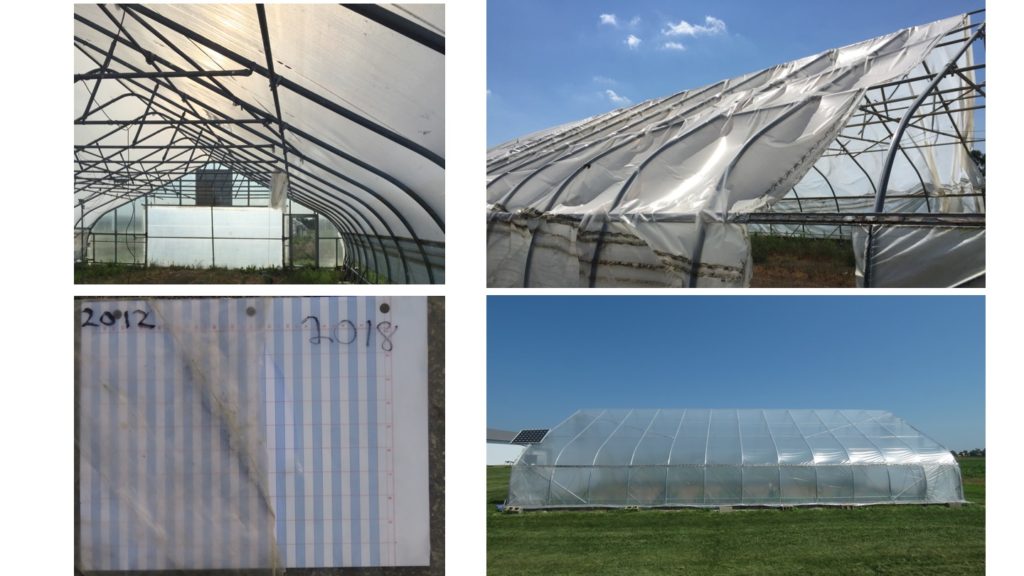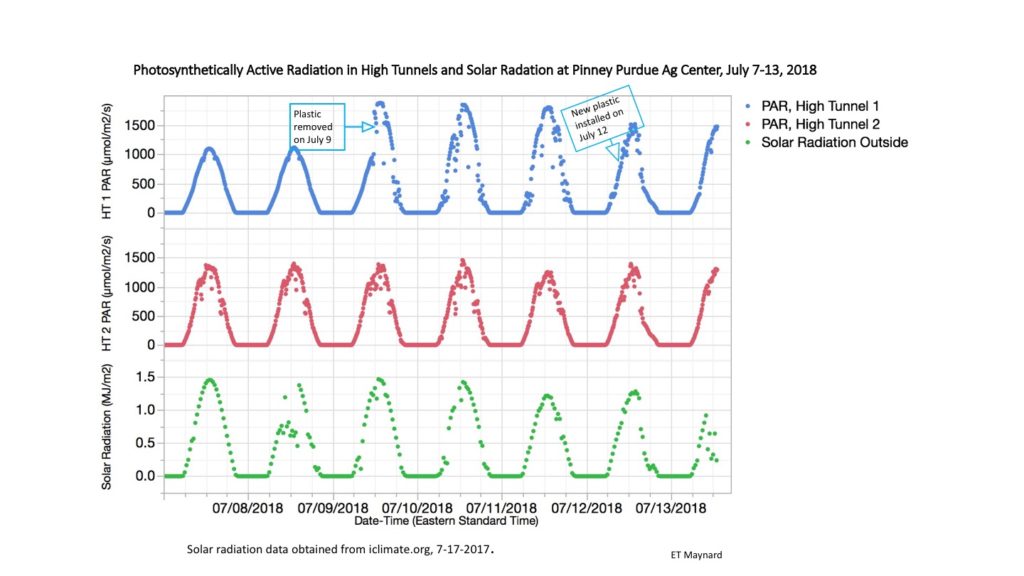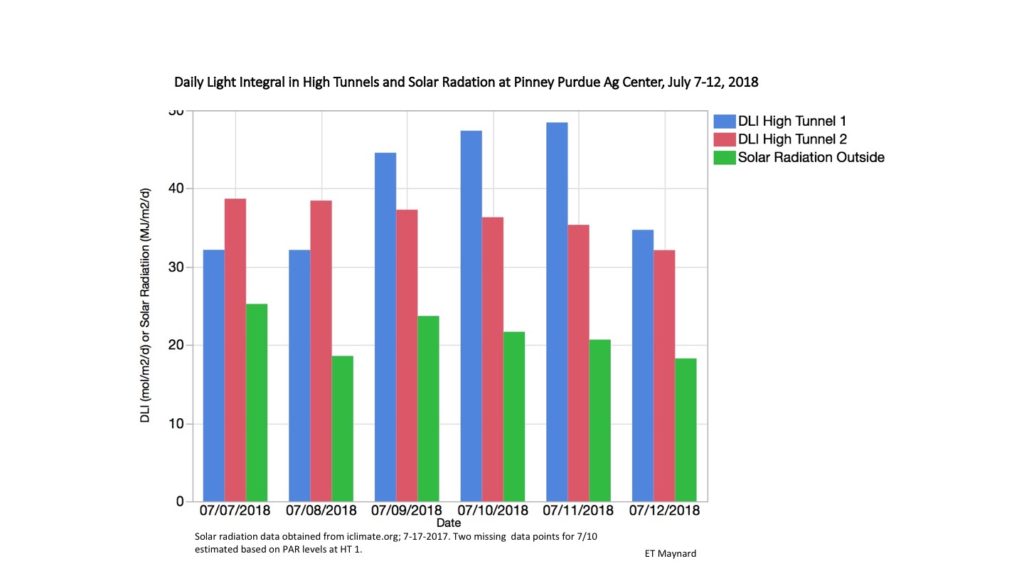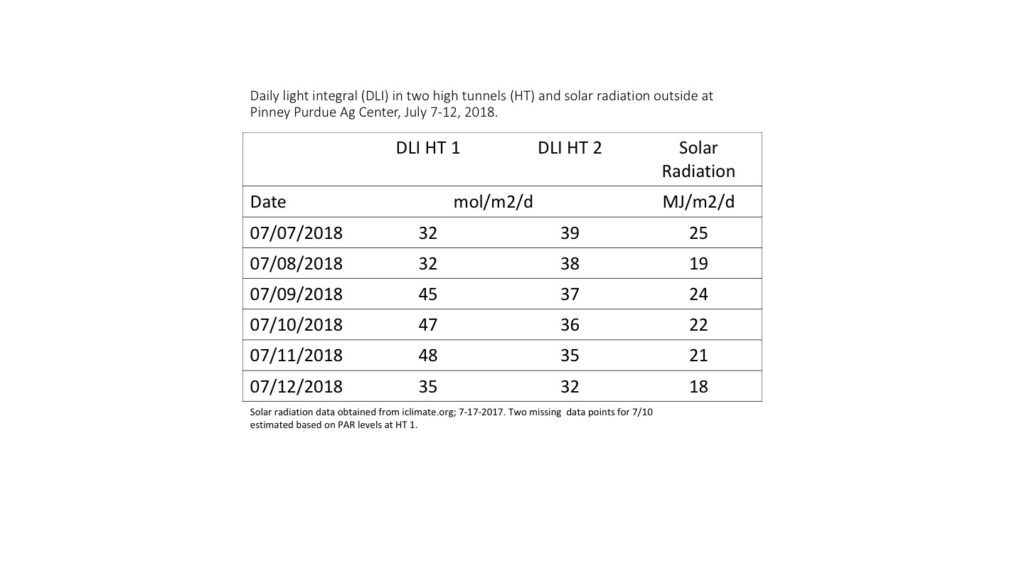Have you ever wondered how much difference new plastic would make in terms of light getting to crops in a high tunnel? We replaced 6-year-old plastic on High Tunnel 1 at Pinney Purdue Ag Center last week. Figure 1 below shows the high tunnel before and after recovering, and pieces of the old and new plastic.
We had a sensor measuring PAR (photosynthetically active radiation, light available for plant use in photosynthesis) in the structure, and a similar sensor in High Tunnel 2, which had new plastic in Dec., 2017. The Ag Center also has an automated weather station that measures solar radiation. Here is what these sensors showed us (Figure 1).

Figure 1. Top left: old plastic viewed from inside High Tunnel 1. Top right: old plastic as it is being removed. Bottom left: old plastic on left and new plastic on right over a piece of lined paper. Bottom right: High Tunnel 1 with new plastic covering.
Figure 2 shows the PAR readings throughout the day in the two high tunnels and solar radiation outside. High Tunnel 1 had the 6-year-old plastic. The plastic was removed on July 9. On July 7 and 8, before old plastic was removed, the maximum PAR was about 1100. This was only about 80% of the maximum recorded in High Tunnel 2. On July 9, 10, and 11, after plastic was removed from High Tunnel 1, the maximum was about 1800. Since the peak solar radiation was similar on on these days, the difference is due to the plastic. Compared to outside, the old plastic reduced maximum PAR by about 40%. The newer plastic on High Tunnel 2 reduced maximum PAR by about 20-25%.

Figure 2. Photosynthetically active radiation in two high tunnels and solar radiation outside at Pinney Purdue Ag Center, July 7-13, 2018. Plastic was removed from High Tunnel 1 on July 9 and replaced on July 12.
But more important for plant growth than the maximum PAR during the day is the total PAR over the course of the day. This is called the daily light integral, or DLI. Figure 3 and Table 1 show the DLI in the two high tunnels, and the total daily solar radiation measured outside over the same time period. DLI under the old plastic on High Tunnel 1, was about 80-85% of DLI under the newer plastic on High Tunnel 2. Solar radiation is measured in different units than DLI, but the measurements show that there were no really cloudy days during this period.

Figure 3. Daily light integral in two high tunnels and daily solar radiation outside at Pinney Purdue Ag Center, July 7-12, 2018. Plastic was removed from High Tunnel 1 on July 9 and replaced on July 12.

Table 1. Daily light integral (DLI) in two high tunnels (HT) and daily solar radiation outside at Pinney Purdue Ag Center, July 7-12, 2018. Plastic was removed from High Tunnel 1 on July 9 and replaced on July 12.
The reduction in light due to old plastic will make a bigger difference for production during fall, winter and spring, when light is likely to limit crop growth. If you have old plastic and plan to grow in the high tunnel this winter, it may be worth recovering in the fall.